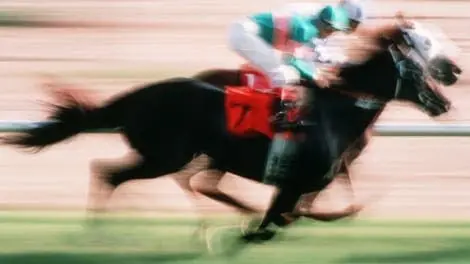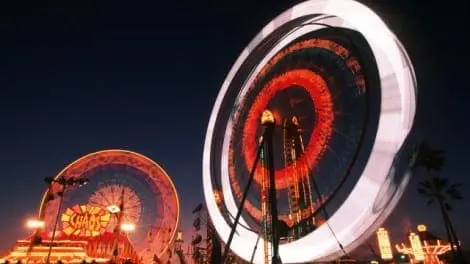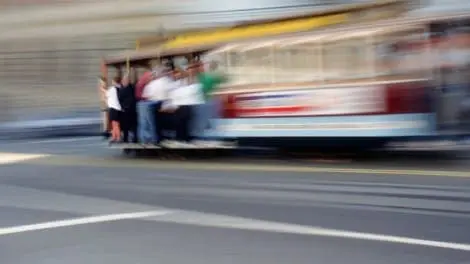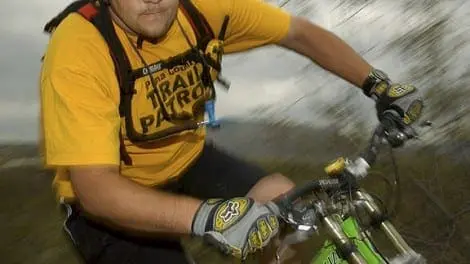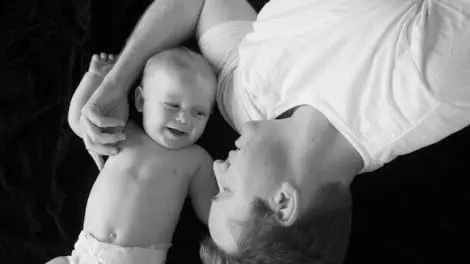DPA Magazine
Follow A Different Horizon
This photo shows what can happen when the camera is aligned to the horizon the cars parked on a hill instead of the true horizon of the building. San Francisco, CA © Chris Michaels, San Diego DPA Instructor
Angled Composition
I call this the "MTV" filter. Even the most mundane subject matter can be energized by angling the camera diagonally one way or another. Compared to a straight horizontal or vertical alignment with horizon, I find angling the camera makes it easier for me to fit essential elements into the frame while simultaneously adding an edgy feeling. Store window display, downtown Seattle© Chris Michaels, San Diego DPA Instructor
Motion Blur by Panning
By moving the camera along with your subject, you can blur the background and keep your subject sharper, gaining attention to it. Keep the shutter open for one second or more as you keep the subject at the same place in the viewfinder. You′ll need to make your camera′s aperture stop down a little to make that happen. Del Mar Race Track, San Diego area Panning with Central Park roller skaters, in conjunction with flash, NYC Speedboat pan blurred, San Diego Harbor© Chris Michaels, San Diego DPA Instructor
Perspective
Perspective can add depth and to the dimensions of photography. Do this by lining up subject matter that draws the viewer in. This can be done with a the full range of lenses, composing so that one subject leads into the other. Adjust depth of field according to how many of the subjects you′d like in focus or which one you′d like to draw your attention to most. With the right angle, you can also pull in something close to the foreground with a telephoto lens. Fort Rosecrans National Cemetery, San Diego Pike Market Place, Seattle The Gliderport at Torrey Pines, San Diego Coit Tower and statue of Christopher Columbus, San Francisco© Chris Michaels, San Diego DPA Instructor
Motion Blur Using a Tripod
Use your tripod and let the subject itself do the blurring by using a very slow shutter speed. Especially good for nighttime, when any kind of moving lights can yield interesting surprises! San Diego County Fair rides © Chris Michaels, San Diego DPA Instructor
Motion Blur by Zooming
If you are using a zoom lens, you can create focus on your subject surrounded by blur by quickly racking your zoom lens in or out while the shutter is open. Results can be unpredictable, so try a few frames if you can and adjust your exposure settings from there. San Francisco cable car zoom blurred© Chris Michaels, San Diego DPA Instructor
Silhouette Your Subjects
By exposing to make your subjects show up as dark forms, they take on graphic impact and mystery and leave a little to the viewer′s imagination to tell a story. Do this by exposing for the background only and then stopping down one f-stop or so to make your subjects dark enough eliminate detail in them. Pedestrians, downtown Seattle Silhouette of a San Francisco cable car Volleyball at Mission Beach, San Diego © Chris Michaels, San Diego DPA Instructor
Try Panning for Motion
1. Try panning to depict a man who reflects a great dad quality of passion for sports and keeping fit. To pan in your pictures, stand in one place and move your camera at the same speed as the moving object or person. Track the movement with your camera. You may need to try this a few times to get it right! 2. In this photo below, there is an added technique of adding an additional light source to the movement. You can try this with your on-camera flash. 3. Here, the cyclist is separated from the background of racers by using a technique of shallow depth of field. Setting your aperture (f-stop) to a low number such as f2.8 or 5.6 will give you this effect. Images © David Sanders, Phoenix DPA Instructor
Tips for Photographing a Father/Child Portrait with a Baby
- Try lying down on a piece of fabric, sheet or carpet that doesn′t have any patterns on it. Babies can′t hold poses for very long but can lie on the floor really well. - Have the photographer stand over you and the baby to take the picture. - With young children, and especially babies, I like positioning the subjects next to a window or sliding glass door. By using the window light it will give the picture a nice, soft light source. It will also allow the young child to interact with the father and not be distracted by camera flash.
Show Dad in his Environment
Sometimes an environmental portrait can capture the essence of Dad′s personality. This guy participating in a bike marathon tells a complete story.

